The Mysteries of Bradford and Micron Counts
A word of warning – there is more to a fiber than the numbers that define it, there is no measurement for crimp, elasticity, luster or durability which should be considered. Touch is an inherently subjective sense, what one person experiences will never be duplicated. What is soft to one person is not as soft to another. Options like Micron and Bradford systems give us an objective measurable way to qualify what is soft, but they don’t tell us everything about a fiber.
- Micron (µ): One micron is one millionth (0.000001) of a meter this is the scientific objective system of measurement for the diameter of a fiber. It is the mean of the fibers, so they can be a range of fiber thickness within a designated number.
- Bradford count: it is a subjective system based on the theoretical premise the finer the wool the more fibers per pound, which allows for more yarn to be spun from a single pound. As a system Bradford does not take into account how crimp affects drafting or spinning. Bradford count is based on the number of 560-yard (512-m) hanks theoretically spun from 1 pound (.54kg) of clean wool roving. The number has a “s” after it.
Want to learn more about the systems?
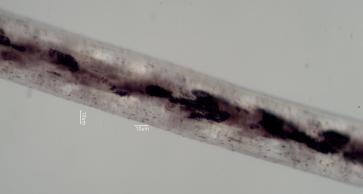
Micron is the system of measurement that is completely objective it is the physical measurement of the diameter of the wool. There is no analysis of crimp, luster, elasticity, or technically texture, there is no element of how a fiber responds. A superwash 26µ wool might feel to the touch “softer” than a 23µ of the same breed, because of how superwash changes the structure of the scales. At the same time two fibers of the same micron count can feel totally different to the touch due to the crimp of the fibers.
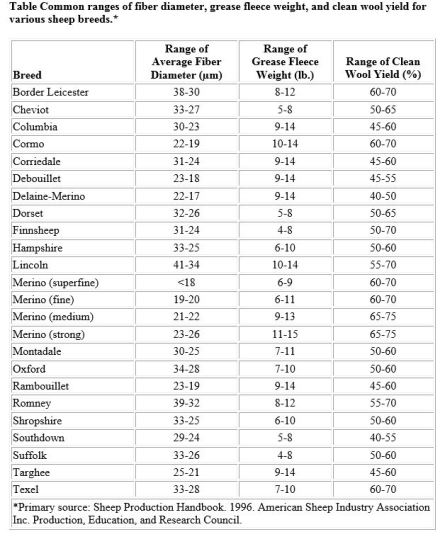
The general assumption of finer is softer is a fair assumption, however is not universally true. The Micron count means slightly different things between camilid, sheep, goat and rabbit fibers. The different spices of animal has different fiber structure which leads to variations between “softness” which is subjective.
Because micron is an objective standard you find it as a newly judged section at some fiber festivals. The Optical Fiber Diameter Analyzer (OFDA) can analyze 4,000 fibers in 30 seconds and includes a portable unit that can be set up right in a shearing pen. If you’ve been to a major fiber festival, gone to the fleece competition area, and seen people in white lab coats standing next to impressive-looking machines, those people were no doubt measuring the microns of different fleeces.
Bradford System aka English Worsted Yarn Count System, spinning count or Bradford count
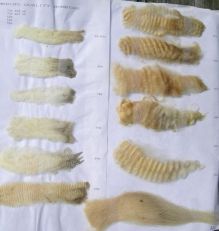 This system is defined as the number of hanks of yarn that can be spun from a pound of wool. A hank of wool is 560 yards long (560 yd/lb = 1.129 km/kg). In theory a pound of 62s wool could produce 34720 yards of yarn. However, this is a truly subjective measurement system. The rougher the wool, the thicker each fiber, and the fewer fibers per pound, which means less yarn can be spun from that pound of fiber.
This system is defined as the number of hanks of yarn that can be spun from a pound of wool. A hank of wool is 560 yards long (560 yd/lb = 1.129 km/kg). In theory a pound of 62s wool could produce 34720 yards of yarn. However, this is a truly subjective measurement system. The rougher the wool, the thicker each fiber, and the fewer fibers per pound, which means less yarn can be spun from that pound of fiber.
The system was created as an estimation system by wool handlers in the English city of Bradford. It was based on processed and cleaned top fibers. However different spinners feel different ways about the crimp and the texture or three-dimensional shape of the fibers.
For example, a fine Merino might be graded anywhere from 80s to 64s, meaning one could spin between 80 and 64 hanks of yarn, each with 560 yards (512m), from 1 pound (.54kg) of clean fiber. Much of the standard generic wool on the market falls in the 62s to 56s range.
USDA Fiber Grades – uses standards in the micron and Bradford systems.
The U.S. Department of Agriculture (USDA) has assigned specific micron ranges to those Bradford wool grades, resulting in the USDA wool grades. These grade become more precise as they allow for the amount of acceptable deviations in the fibers.
For example, the average fiber diameter of 80s grade wool, is 17.70–19.14 microns, with a standard fiber diameter deviation of 4.09 microns within any single animal fleece. If the standard deviation of the fibers is greater it becomes a grade lower.
It is even stricter for Wool Top blends of fleeces. Grade 80’s “Wool top with an average fiber
diameter of 18.10 to 19.59 microns, inclusive, and a fiber diameter dispersion that meets the following requirements: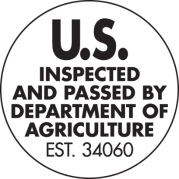
- 25 microns and under-not less than 91 percent.
- 25.1 microns and over-not more than 9 percent.
- 30.1 microns and over-not more than 1 percent.”
The Blood System (What I consider to be the worse system)
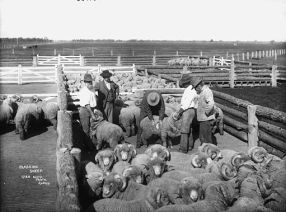 In the early 1800s it was developed in America to represent the amount of Spanish fine-wool Merino genetics in other breeds of sheep. This was function on the idea that Spanish fine-wool Merino was the agreed upon finest fiber. The grades were then defined in terms of percentage of Merino blood. A first cross was a half blood (example Corriedale as a merino Lincoln cross) and extended out to 3/8 blood and 1/4 blood. Today the system is just used as a general terms for grading fiber: Fine (17-22.04µ) , 1/2 Blood (22-24.99 µ), 3/8 Blood (24.95-27.84 µ), 1/4 Blood (27.85-30.99 µ), Low 1/4 Blood (31-34.39 µ), Common (34.4-38.09 µ), and Braid (38.1 µ and larger).
In the early 1800s it was developed in America to represent the amount of Spanish fine-wool Merino genetics in other breeds of sheep. This was function on the idea that Spanish fine-wool Merino was the agreed upon finest fiber. The grades were then defined in terms of percentage of Merino blood. A first cross was a half blood (example Corriedale as a merino Lincoln cross) and extended out to 3/8 blood and 1/4 blood. Today the system is just used as a general terms for grading fiber: Fine (17-22.04µ) , 1/2 Blood (22-24.99 µ), 3/8 Blood (24.95-27.84 µ), 1/4 Blood (27.85-30.99 µ), Low 1/4 Blood (31-34.39 µ), Common (34.4-38.09 µ), and Braid (38.1 µ and larger).
 Picking fibers by Numbers: The dangers of using numbers to pick your fibers –
Picking fibers by Numbers: The dangers of using numbers to pick your fibers –
In a world where it seems like everything must be as soft as possible we forget that each breed has its place and purpose among our projects. Not everything needs to be knit in the softest, most delicate wool. Some projects require something more durable. Mittens to use with your snow blower or a hat that you need to keep you warm. Perhaps a felted doorstop, a tea cozy, or a heavier coat. These kinds of projects long to be made out of hearty, warm wools that are otherwise too robust for next-to-skin wear. In contrast, using superfine baby Merino cannot stand the amount of were and abuse and make your project with merino and your mittens are destroyed.
Don’t judge a fiber by the single repetition of it, yarn can also become scratchy by human intervention, not by fault of the sheep. In some cases overzealous processors, and not the animals themselves, are often responsible for the dry, brittle, and lifeless wool yarns you may encounter.
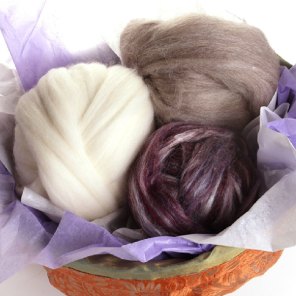 The ultimate decision on softness lies in the hands of the beholder. When it comes to touch, each person’s perception varies dramatically. I love all fiber types and I am more likely to be critical of how a fiber is processed than the texture of the fiber nothing feels scratchy to me. I where socks made with Icelandic and love their warmth and indestructibility after years of wear, but my best friend just about breaks out in hives if she works with anything but the finest, Merino (in her projects if it doesn’t have 20% silk it’s not soft enough).
The ultimate decision on softness lies in the hands of the beholder. When it comes to touch, each person’s perception varies dramatically. I love all fiber types and I am more likely to be critical of how a fiber is processed than the texture of the fiber nothing feels scratchy to me. I where socks made with Icelandic and love their warmth and indestructibility after years of wear, but my best friend just about breaks out in hives if she works with anything but the finest, Merino (in her projects if it doesn’t have 20% silk it’s not soft enough).
Please don’t discount anything until you actually sit down and work with it. Each new breed brings a new fiber experience. Adjust your expectations and you can start to have fun traveling the world with different wools. Non-Merino breeds feel different- that’s the whole point.
